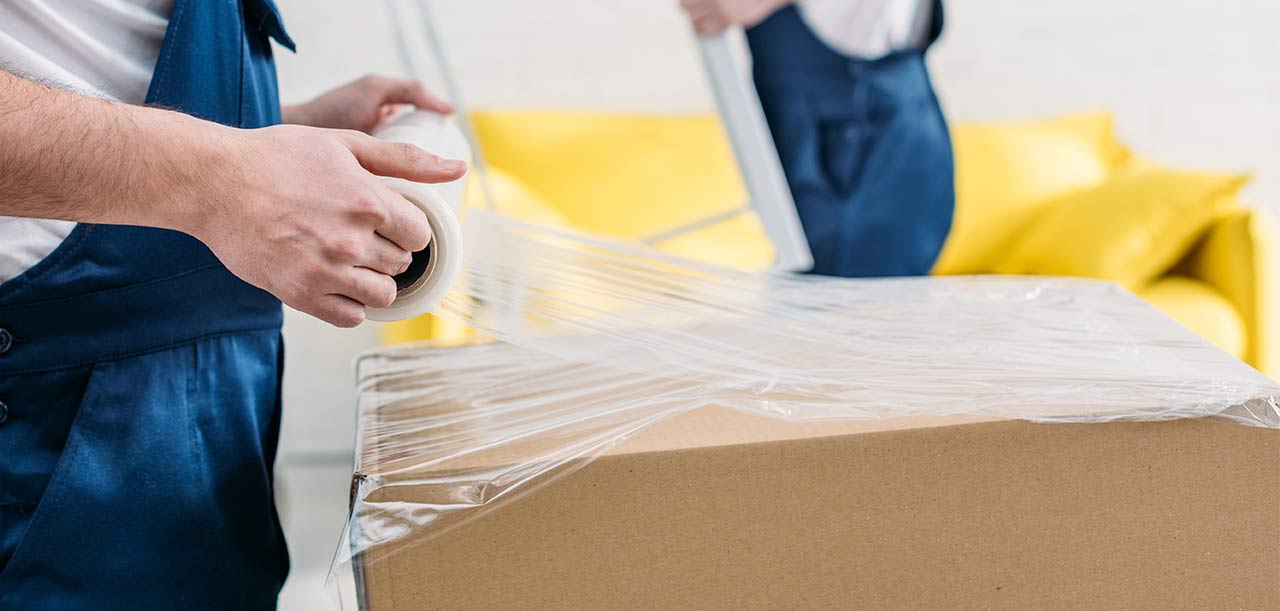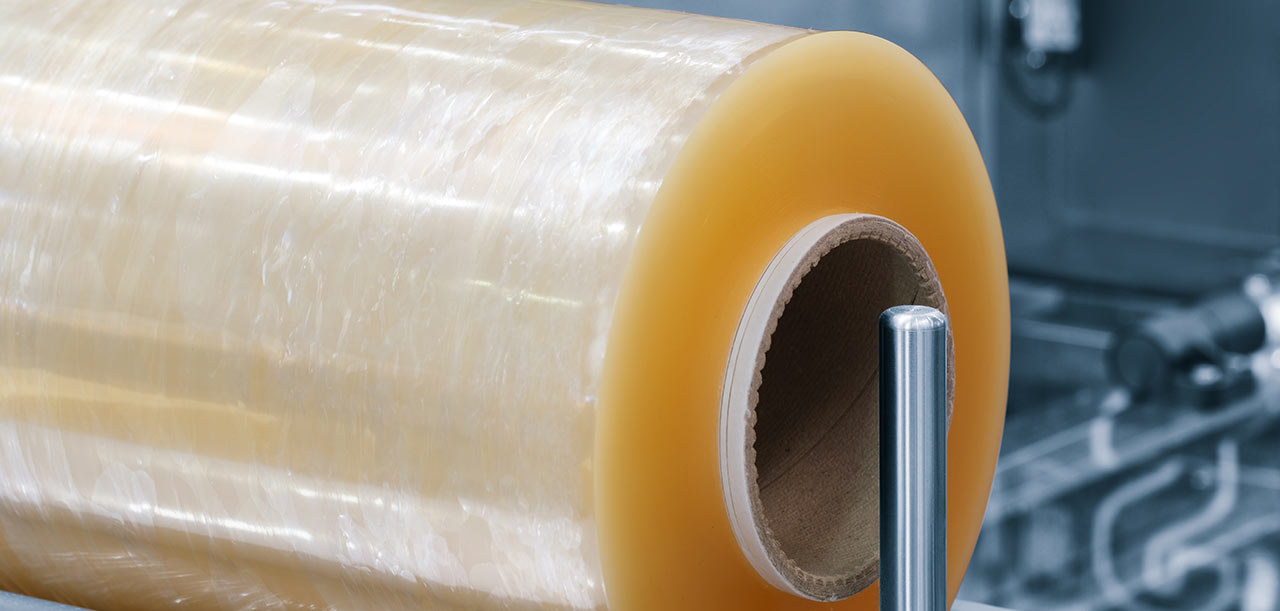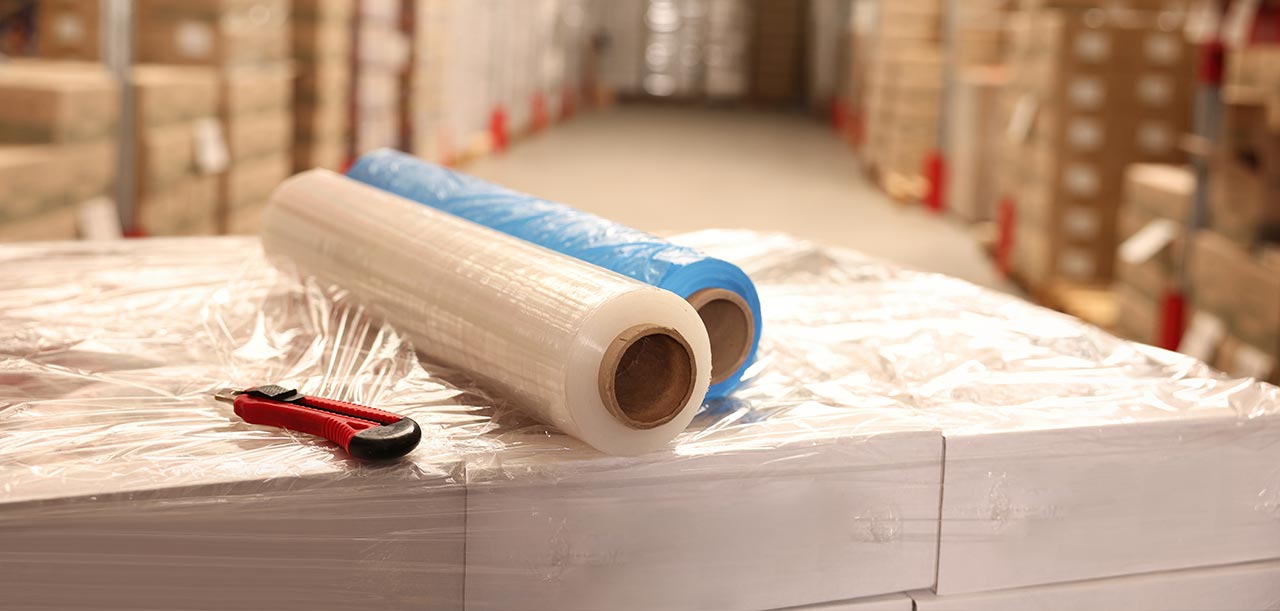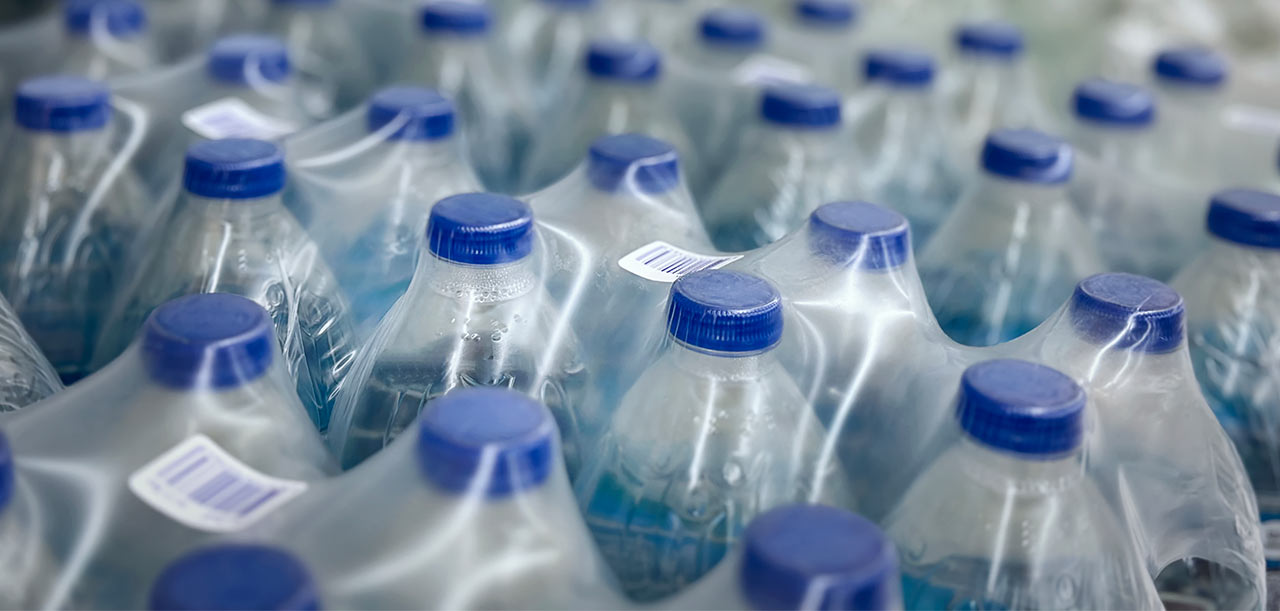Often, people get confused between stretch wraps and shrink films, and we get it. They do appear similar as they’re both plastic films. But even though both the terms are sometimes used interchangeably, they’re very different.
So, what makes a stretch wrap and a shrink film so different? Let’s ‘unwrap’!
What is a Stretch Wrap?

Also known as a stretch film, stretch wraps are plastic wraps that contain boxes and products on pallets during shipping, storing, and distribution. Available in various dimensions, colors, gauges, and types, they can be applied by hand or with machines. The most common colored stretch wraps are clear, making identifying what's on the pallet easy. They also help in scalability and security.
Hand vs. Machine Application
Stretch wrap rolls for hand application are usually less wide for ease of use. You’ll also find pre-stretched films that need less output to be applied. But pre-stretched films also contain less film per roll compared to the conventional stretch wrap roll.

On the other hand, machine stretch wrap film is wider to fit a machine wrapper and takes up significantly less time than hand application.

Types of Stretch Wrap Films
The most popular types of stretch wrap films available are 'cast' and 'blown,' based on how they are manufactured.
Cast Stretch Wrap
A cast stretch wrap is manufactured through a cast extrusion process wherein a heated screw barrel melts the resin, and then a flat, narrow slot (often called a 'die) turns it into a sheet. This sheet is later passed over chilled rollers to solidify.
Cast films are highly transparent and glossy in appearance. They're tear-resistant and available in a range of thicknesses, too. Their consistent thickness makes them easy to use and cling to products.
Blown Stretch Wrap
Like cast stretch wraps are manufactured through cast extrusion, blown stretch wraps are manufactured through a blown extrusion process. The melted resin is blown through a circular die instead of a flat, narrow slot, creating a bubble. The amount of air blown determines the film's width and thickness and cools it down. Nip rollers then flatten this material into a tube that can be reeled and made into a blown stretch wrap roll.
A blown stretch wrap film is more durable, tear-resistant, and cling-able than a cast stretch wrap film. It also produces less manufacturing scrap and gives protection against moisture and gas; in contrast to the transparent and glossy appearance of cast stretch films, blown stretch wraps appear hazy and dull. However, these wraps also have higher unwinding noise than cast films.
Cast Stretch Wrap vs. Blown Stretch Wrap
While most industries opt for cast wrap film thanks to its cost-effectiveness, the application determines what's most suitable. Blown stretch wrap is better for wrapping sharp-edged products and heavier loads due to its higher durability and tear resistance. Cast stretch wrap is better suited for light products and loads on pallets that need to be easily scannable.
Usage
Wrapping pallets of pre-packaged products for shipping/storing/distribution.
What is a Shrink Wrap Film?

Shrink is the plastic film wrapped around food and consumer goods like water bottles, pharmaceuticals, soda cans, frozen pizza boxes, and more. As its name suggests, shrink film actually shrinks itself to pack bundles of products together.
When heat is applied to the film through a heat gun or tunnel at a specific temperature, the film shrinks uniformly around the bundle to be packed.
Application
A shrink wrap machine is usually used to wrap as well as shrink smaller packages. For larger packages, specialist machines spin the pallet while wrapping. They are then heated for shrinking using heat guns.
Shrink films can also be printed on and branded, making them ideal for retail product displays. They are also secure and durable.
Types of Shrink Films
Generally, shrink films are available in polyvinyl chloride (PVC) and polyolefin. Although it is more cost-effective than polyolefin, PVC is considered outdated due to its limitations with edible products. Polyolefin is durable, highly clear, and has excellent shrink-ability.
Usage
Wrapping and shrinking bundles of products for display/storage/shipping.
Summary
After a detailed evaluation of what stretch wrap and shrink wrap are, what they're made of, how they're manufactured, how they are applied, and finally, what they are used for, here's summarizing it all -
| Stretch Wrap Film | Shrink Wrap Film | |
| What it is | Stretchable plastic film wrapped around pallets under tension | Shrinkable plastic to pack bundles of products together |
| Made of | Polyethylene plastic | Polyolefin plastic |
| Mainly used for | Industrial packaging of pre-packaged products for shipping/storing/distribution | Packaging retail products for display/storage/shipping |
| Features | Protective, cost-effective, adaptable | Protective, breathable |
Find the Best Stretch Wrap Roll for Your Needs at SCI
Discover high-performance cast stretch wraps, machine stretch wrap rolls, and pre-stretched wraps at the most affordable rates at SCI. With the convenience of ordering online, we're your one-stop solution for all packaging needs.

